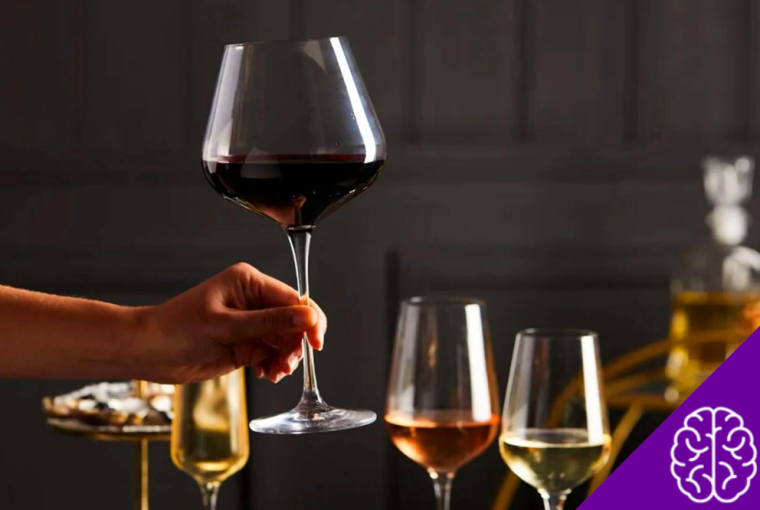Wine enthusiasts know that the right glass can transform your drinking experience completely. Beyond just looking elegant on your table, the shape and size of your wine glass directly impacts how the wine tastes, smells, and feels in your mouth.
Andreea Botezatu, professor in the Department of Horticultural Sciences at the Texas A&M College of Agriculture and Life Sciences and an enology specialist, explains that while you don’t need to obsess over every subtle detail, having the right glasses for your reds, whites, and sparkling wines makes a genuine difference.
“For those interested in wine or hosting friends and family for special occasions, it’s worth having a set of glasses for your red wines, whites, and sparkling wines,” Botezatu notes. The good news? Making these choices isn’t as complicated as wine shops might have you believe.
Red Wine Deserves Big, Bold Glasses
Red wines thrive with oxygen exposure, which directly affects their aroma and flavor profile. These wines contain tannins—chemical compounds found in many fruits and vegetables that create that dry, slightly rough sensation in your mouth.
The key to enjoying red wine lies in gentle agitation, which allows aeration to soften the harshness and release those complex aromas locked inside the wine.
This is why red wine glasses typically feature larger bowls that accommodate a gentle swirling motion.
What to look for:
- Large bowl that gives you room to swirl
- Wide opening to maximize oxygen contact
- Sufficient volume to hold a proper pour without filling completely
Botezatu emphasizes that you don’t need to overthink the specifics: “You would probably have to be a wine tasting expert to really notice any differences between different types of red wine glasses. For most wine lovers, a good all-purpose red wine glass works perfectly.”
The most important factor is size—you want enough space to agitate the wine without splashing it everywhere.
White Wine Benefits from Narrow Openings
White wines operate under completely different rules than their red counterparts. With fewer tannins and less need for air contact, these wines perform better in slightly smaller glasses with narrower tops that help concentrate their delicate aromas.
Key features for white wine glasses:
- Smaller bowl than red wine glasses
- Narrow rim to focus aromas
- Comfortable size for quicker consumption
Temperature control becomes the primary concern with white wines, which taste best when served chilled.
A smaller glass ensures you’ll finish your pour before the wine warms up significantly. Remember to hold your glass by the stem rather than the bowl to avoid heating the wine with your hand.
Sparkling Wine: Three Distinct Options
Sparkling wines require more careful consideration, as the glass choice dramatically affects how long those precious bubbles last. Botezatu recommends three different glass styles, each with distinct advantages and drawbacks.
The Classic Coupe
The shallow, wide-bowled coupe dominated sparkling wine service during the 1920s, becoming synonymous with luxury parties and those iconic champagne towers.
While undeniably beautiful and perfect for dramatic presentations, coupes have a significant flaw: their large surface area causes sparkling wine to lose effervescence rapidly.
Some people actually prefer this effect, as it creates a smoother drinking experience. However, if you’re choosing sparkling wine specifically for its bubbles, the coupe works against your intentions.
The Traditional Flute
Flute glasses feature tall, narrow shapes that preserve bubbles much better than coupes. Their tube-like design minimizes surface area, keeping your sparkling wine fizzy longer. You’ll recognize these glasses from New Year’s celebrations and wedding toasts.
The downside? That extremely narrow opening can trap aromas, preventing you from fully experiencing the wine’s complexity.
Botezatu suggests flutes work best for wines like Prosecco, where effervescence and freshness matter more than nuanced flavor profiles.
The Underrated Tulip
The tulip glass represents the perfect compromise between bubble preservation and aroma enhancement. With a wider bowl at the bottom that tapers toward the top, it maintains bubbles while allowing aromas to develop properly.
“This is actually an injustice, because this glass is the best choice for sparkling wines,” Botezatu explains.
“You want a glass that really helps develop those aromas, and that would be your tulip glass. It allows the creamy, bread-like notes characteristic of champagne to shine while maintaining gentler effervescence than the flute.”
For high-quality champagnes and sparkling wines where you want to appreciate the full complexity, tulip glasses deliver the optimal experience.
Practical Tips for Wine Glass Success
Storage and Care:
- Store glasses rim-up to prevent dust accumulation
- Hand wash when possible to avoid detergent residue
- Polish with lint-free cloths for crystal clarity
Serving Guidelines:
- Fill red wine glasses one-third full to allow proper swirling
- Pour white wine to about half-full for temperature control
- Sparkling wines should fill glasses two-thirds full
Investment Strategy:
Start with versatile basics rather than specialized glasses for every wine type. A good all-purpose red wine glass, a quality white wine glass, and tulip glasses for sparkling wines will handle 95% of your wine drinking needs.
Elevate Every Sip!
The right wine glass isn’t just about following rules—it’s about maximizing your enjoyment of every bottle you open. Whether you’re hosting a dinner party or enjoying a quiet evening at home, understanding these glass fundamentals helps you serve wine the way it was meant to be experienced.
Remember that wine appreciation is ultimately personal. While these guidelines provide an excellent foundation, your preferences matter most.
Experiment with different glasses and discover what enhances your favorite wines. The perfect glass is the one that makes each sip more enjoyable for you!


